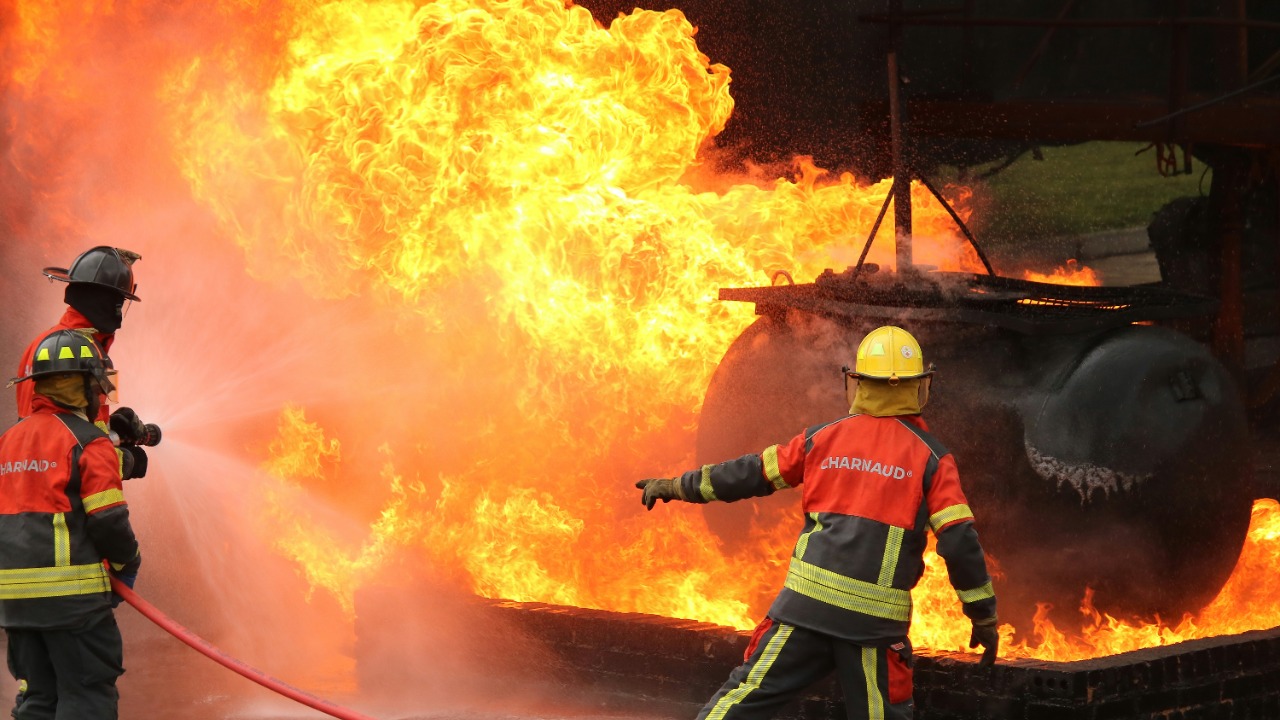
In a significant leap forward for maritime safety technology, the world’s first AI firefighting system has been developed to autonomously tackle oil fires on moving naval ships. This groundbreaking system addresses the unique challenges of fire suppression in dynamic naval environments, where traditional methods often fall short due to ship motion and limited crew intervention. By fusing artificial intelligence with advanced suppression mechanisms, it promises to bolster operational resilience for naval fleets across the globe, with initial demonstrations showcasing its effectiveness against fuel-based fires.
The Innovation Behind the AI Firefighting System
The core technology of this system is rooted in AI algorithms that can detect and respond to oil fires in real-time on moving vessels. This is a significant advancement in maritime safety, as it allows for immediate action in situations where human intervention may be delayed or impossible. The system’s development has been driven by the need to address the unique challenges of naval environments, where fires can rapidly spread and intensify due to ship movement and other factors.
Key to the system’s functionality is the integration of sensors and suppression agents specifically designed for naval applications. These components work together to target and extinguish fires on moving ships, operating autonomously without the need for human input. This marks the world’s first autonomous solution for firefighting on naval vessels, a pioneering achievement in maritime safety technology as reported in late 2025.
Challenges of Oil Fires on Naval Vessels
Oil fires on naval vessels present a unique set of hazards. The rapid spread and intensification of these fires are exacerbated by ship movement, making them particularly difficult to control. Conventional firefighting methods often fall short in these situations, as they are not designed to cope with the dynamic conditions of a moving ship.
Moreover, the safety of the crew is a major concern during firefighting operations on naval ships. Traditional methods require crew members to be in close proximity to the fire, exposing them to significant risks. Environmental factors such as waves and wind can also hinder firefighting efforts, further complicating the situation. These persistent issues have been addressed through the development of an AI-driven autonomous system, a significant milestone in maritime safety technology achieved in 2025.
How the System Detects and Suppresses Fires
The AI system employs computer vision and thermal imaging to identify oil fire outbreaks on moving decks. This allows for real-time detection and response, a crucial feature in the dynamic environment of a naval vessel. The system’s ability to rapidly identify and react to fires is a key factor in its effectiveness, as it enables immediate action to be taken before the fire can spread.
The suppression mechanism involves the targeted deployment of foam or inert gases to extinguish the flames. This approach ensures that the stability of the ship is not compromised during firefighting operations. Initial tests have demonstrated impressive performance metrics, with the system responding swiftly and effectively under simulated naval conditions.
Testing and Validation on Moving Ships
In 2025, rigorous testing protocols were conducted to validate the system’s efficacy. These tests involved simulating oil fires on vessels at sea, providing a realistic environment for the system to operate in. The results were promising, with the system successfully extinguishing fires during motion, even under varying environmental conditions such as speed and sea state.
Furthermore, safety validations were carried out to ensure the reliability of the AI system in operational scenarios. These tests confirmed that the system poses no risk to the crew or equipment, further reinforcing its potential as a game-changing solution for naval firefighting.
Implications for Naval Operations and Safety
The introduction of this AI system has far-reaching implications for naval operations and safety. By reducing fire-related downtime, it enhances fleet readiness, a crucial factor in naval defense. The system also offers potential cost savings, as it reduces the need for extensive firefighting equipment and personnel.
Moreover, the system significantly reduces the human risk associated with firefighting on moving ships. By operating autonomously, it eliminates the need for crew members to be in close proximity to the fire, thereby enhancing their safety. The scalability of the technology also means it could be adopted by navies worldwide, playing a key role in modernizing maritime defense.
Future Developments and Global Adoption
Looking ahead, there are plans to expand the system and integrate it with other AI naval tools. This would further enhance its capabilities and broaden its application in naval operations. Regulatory approvals and deployment timelines are expected to follow the successful demonstrations conducted in 2025.
There are also ongoing collaborative efforts with naval organizations to standardize this firefighting technology worldwide. This would facilitate its adoption by navies across the globe, marking a significant step forward in global maritime safety. The world’s first AI firefighting system for naval vessels represents a major breakthrough, promising to revolutionize the way fires are tackled on moving ships.
More from MorningOverview